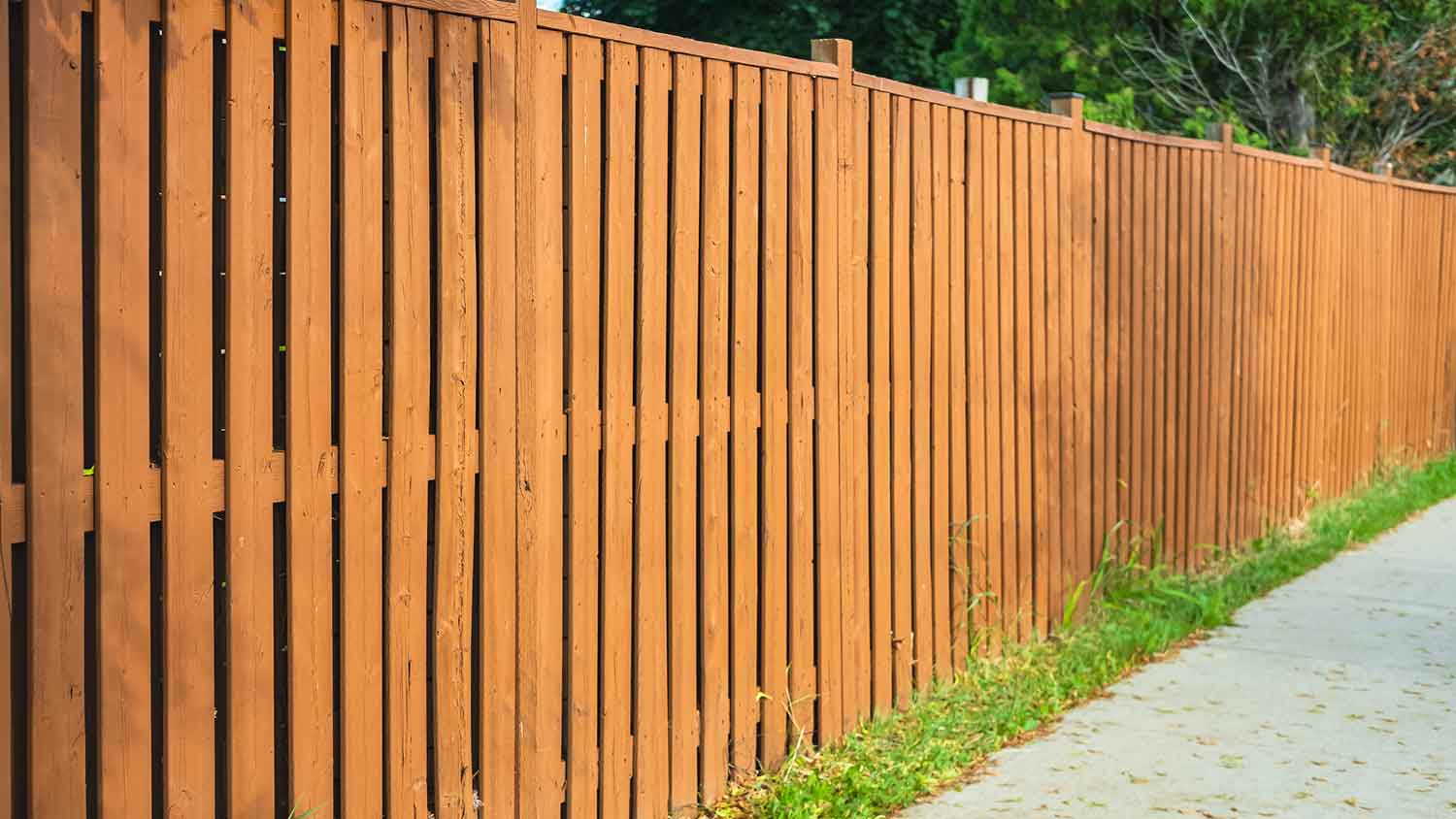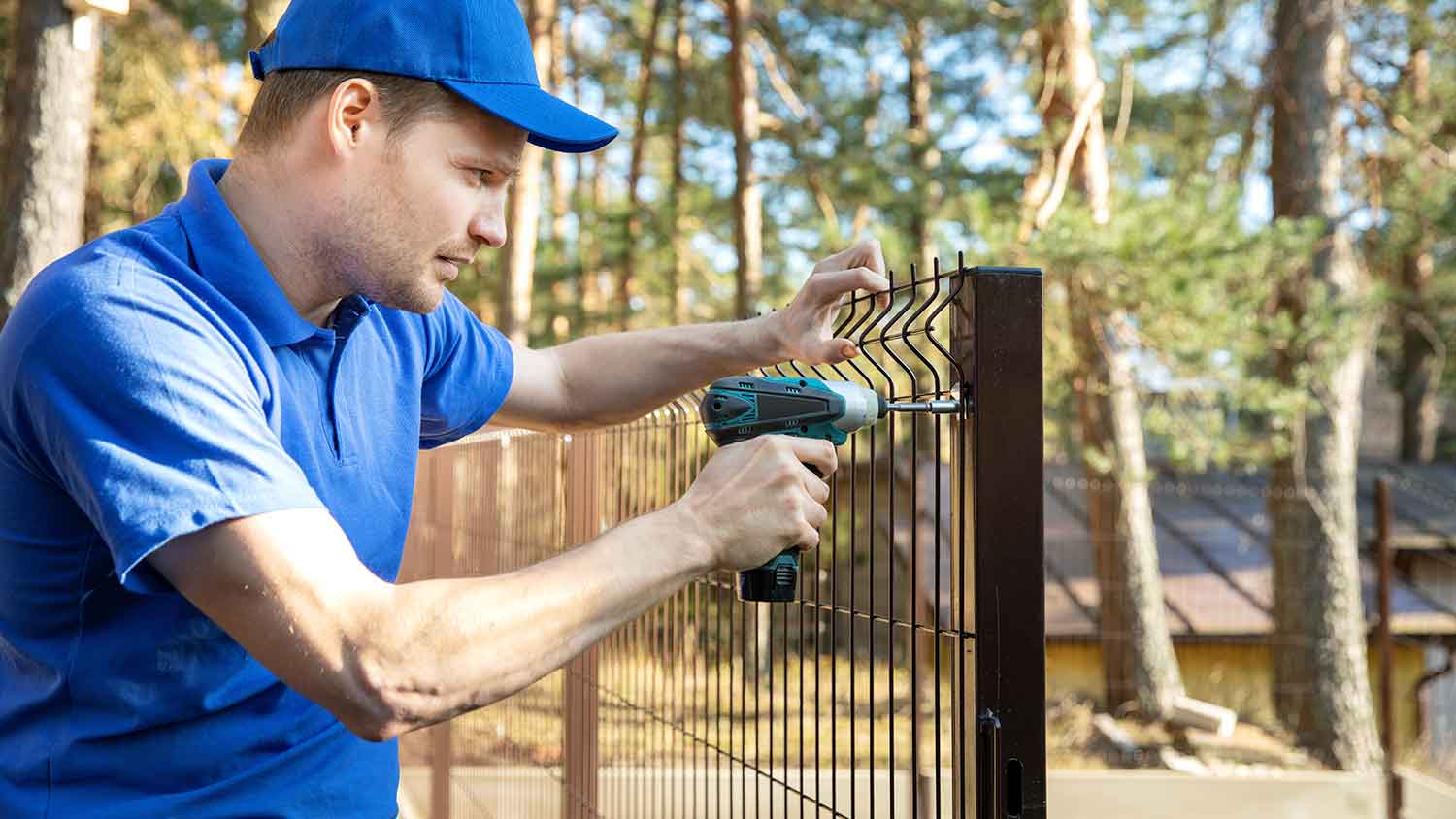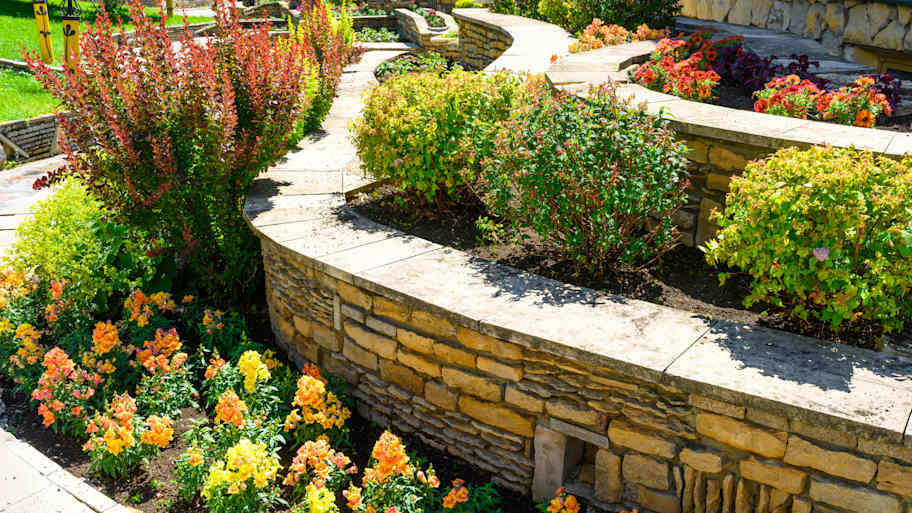
Get pricing for fence installation in Dallas. Compare costs for wood, vinyl, chain link, and more fencing materials and learn about local cost factors.
See if a fence installation stands up to its value


Home Value Rating: 3/5
A new fence yields moderate returns that you can maximize with the help of a pro
The average return on investment (ROI) for a fence installation is about 50%, which equals $950 to $2,400 in resale value.
Location, fence size, material type, and quality affect the total added value.
They say fences make good neighbors, but the tried and true hallmark of an American yard offers more than just privacy and peace of mind—it can also increase your home’s value by anywhere from 30% to 70%, or around 50% on average.
The added value of your fence depends on many variables, such as fence height, materials, and location. We go over all of these factors and more to help you determine if it’s worth installing a fence.
Oftentimes, fences sit directly on a property line, which can cause uncertainty about who owns it—and therefore who’s responsible for maintenance and repairs. In these instances, we recommend talking to neighbors and clarifying who is ultimately responsible for the fence.
Common factors that can influence the value of a fence include where you live, the size of the fence, the type of fence, whether you install it yourself or hire a pro, and the materials. We go into detail about each of these factors and then some in the following section to help you determine your fence’s potential ROI.
Your location impacts your fence’s ROI in a few key ways. Firstly, certain locations have a higher demand for specific fences and styles than others. If you install a grand metal fence around your rural property, there’s a good chance this won’t appeal to buyers looking for a rustic farmhouse vibe. Meanwhile, if you install a glass fence around a pool in a high-end, modern subdivision, you could see a major increase in your home’s value.
Another way that location can impact how much a fence increases a home's value is through the cost of living. You may have to spend more on a fence in a region with a higher cost of living, which could mean fewer savings come time to sell than a home in an area with a lower cost of living, where you don’t need to invest as much into the fence to have the same quality.
In other words, it all depends on local trends, which is why you should compare homes around you to see what’s in style and speak with a local home appraiser or real estate agent near you who’s familiar with the area.

Most fence heights fall between 3 and 8 feet, with 6 feet being the most average. A taller 8-foot fence may fall toward the higher end of the estimated ROI, while a smaller 3-foot fence may fall on the lower end. This is because taller fences offer better privacy, noise cancellation, animal containment, and protection from wildlife. Deer fencing for gardens can especially appeal to buyers in areas where deer are a problem, for instance.
Here’s a rough estimate of the resale value by the most common fence sizes.
| Fence Size | Average ROI |
|---|---|
| 3 feet | $550–$1,400 |
| 4 feet | $750–$1,900 |
| 6 feet | $950–$2,400 |
| 7 feet | $1,100–$2,900 |
| 8 feet | $1,300–$3,300 |
Again, privacy fences that are 6 feet or taller offer more value overall than shorter fences. The cost of privacy fences, however, falls around $4,300 on average—$1,100 more than fences that don’t offer privacy. Meanwhile, a typical pool fence costs $4,000, which is also one of the highest price tags out of all fences, but it could offer a high ROI if you go for a glass pool fence due to the high-end look that comes with the increased safety.
Though hiring a pro to install a fence adds $1,600 to a standard fence installation, or around 50% of the cost of the project, this investment is well worth the cost. A botched DIY fence installation from someone who doesn’t have ample experience in how to install a fence could lower your ROI by making your home less attractive if the fence starts to lean, break, or warp over time.
Not to mention, installing a fence is a time-consuming, laborious project that requires precision to look good and make your home appear more sellable. A fence installer near you can install a high-quality fence that helps attract buyers, increase your curb appeal, protect your fence from void warranties, and keep your fence looking good for years to come.
When it comes to increasing your home value with a fence, the construction process and materials play a big role. Well-built fences require strong, durable materials that are both practical and attractive. According to a study conducted by the National Association of Realtors, 35% of homeowners report that functionality is the biggest end goal, while 22% say that durable, long-lasting materials play the biggest role in the result of a remodeling project.
Though we touched briefly on it before, curb appeal can't be stressed enough when it comes to installing a fence to increase a home's value. Remodeling's 2024 Cost vs. Value Report states that 90% of the projects that had the highest ROI were exterior home improvements. This could suggest that how your home looks on the outside determines who is willing to tour the inside and compete to purchase the home.
Estimating a fence’s value isn’t a clear-cut equation, but there are ways you can get a rough idea of what to expect. Use the following steps to help you estimate the added value of a fence for your property:
Compare properties. One way to determine if your fence project will add value to your home is by searching for properties in your area with similar features to your existing home—some with fences, and some without. Higher prices on homes with fences could mean fences positively impact sales prices.
Consider the market. While you’re searching for comparable homes online, make note of the types of fences you see on properties. Certain fence materials and styles may be more popular than others, making them more likely to increase your home’s value.
Calculate the cost against returns. Get a price estimate for the cost of materials, labor, permits, and more to deduct from how much your home value could increase to get a true idea of how worthwhile it is to install a fence. Most homes won’t need a permit, but it depends on local laws, so check with your building department to see if you need a permit to build a fence.
Design the best fence for the ROI. Size, height, material, construction, design, and more can all go hand-in-hand in influencing the ROI of installing your fence, so be sure to plan your project accordingly to make the most out of the investment.
Get an appraisal. When in doubt, it’s best to leave estimates to the pros by finding a home appraiser. A property appraiser can inspect your home and property to give you the best ballpoint figure for installing a fence with a high ROI.

The average cost to build a fence is $3,200. Chain-link, wood, and vinyl fence costs fall on the lower end of the price point, while glass, wrought iron, aluminum, steel, and natural stone fences cost the most.
If you spend $3,200 on an average fence, its resale value could fall anywhere between $950 and $2,200 depending on the type of fence, style, location, and quality. Because fences have such a wide variety in their estimated ROI, you could recoup very little or quite a lot if you play your cards right.
Fences can cost anywhere from $425 to upwards of $14,000. If your fence installation happens to lean toward the higher end of this price range, you may be wondering if a fence is worth it. With an average ROI of around 50%, a fence isn’t a project that can give you the biggest recoup value. However, they do play a role in sellability in areas where fences are in high demand, making them a solid investment for those circumstances.
If you live in a more rural region where fences aren’t very common, then installing a fence may not be worth your investment. But for most prospective buyers, fences offer enough benefits to counteract the disadvantages of installing a low-cost but affordable fence.
For example, wood fences cost between $12 and $38 per linear foot and offer sound protection, natural dimension, privacy, kid and pet containment, and animal deterrent features. Cedar fencing is a low-cost, low-maintenance type of wood fencing that is naturally water-resistant and pest-resistant, making it a popular choice.
| Pros | Cons |
|---|---|
| Added property value | Costly investment |
| Better safety | Labor-intensive installation |
| Enhanced curb appeal | Not very DIY-friendly |
| Increased privacy | Permit requirements may apply |
| Noise cancellation | ROI varies widely |
Home is the most important place on earth, which is why Angi has helped more than 150 million homeowners transform their houses into homes they adore. To help homeowners maximize the value of their investments, we gather ROI data from reputable sources, including industry reports, real estate studies, and interviews with market experts. We calculate the average resale value for projects by multiplying the ROI against the project’s average cost according to our cost data, which is sourced from thousands of real Angi customers.
Want to help us improve our data? Send us a recent project quote or home appraisal value to [email protected]. Quotes and personal information will not be shared publicly.
From average costs to expert advice, get all the answers you need to get your job done.

Get pricing for fence installation in Dallas. Compare costs for wood, vinyl, chain link, and more fencing materials and learn about local cost factors.

Vinyl fence costs in Dallas depend on length, height, and style. Learn how to budget for your project in this guide.

Chain-link fences are among the most affordable options available. Use this chain link fence cost guide to see what your installation will cost in Dallas, TX.

Not sure how to calculate blocks for your retaining wall? Here’s how to figure it out based on the size of your wall and the dimensions of your blocks.

Comparing vinyl vs. aluminum fencing is a question many homeowners consider when installing a new fence. Here's how to narrow down your choice.

If you assumed your hilly yard disqualified you from building a fence, think again. Here’s how to build a fence on a slope, including two ways to do so.